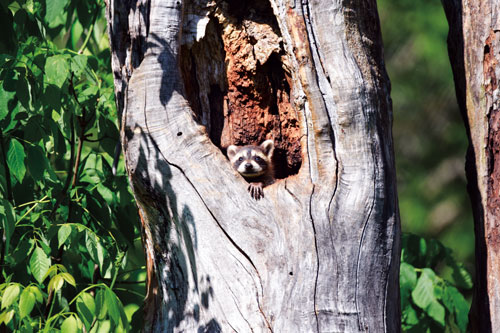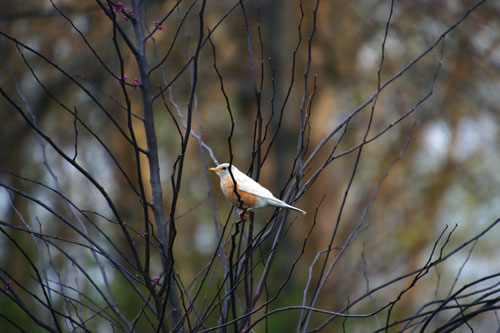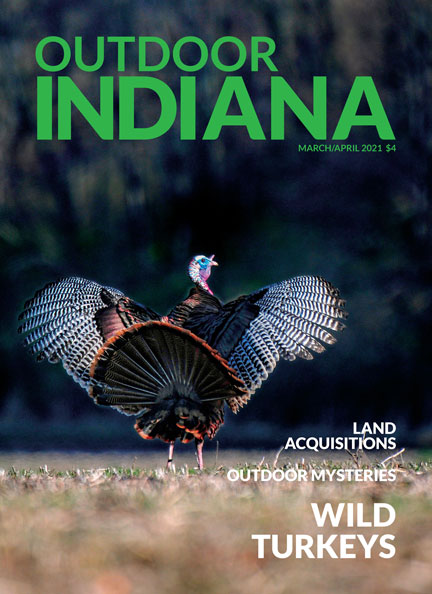
A tom wild turkey struts to impress hen turkeys during spring in Tippecanoe County.
Photo by Frank Oliver
Featured Stories
- From the Director
A BIG THANK YOU TO JOHN DAVIS

DNR Director Dan Bortner
John Davis knows every corner of Indiana and has bettered the lives of millions of Hoosiers.
He joined the Department of Natural Resources family in 1991, coming to us from the Indiana Department of Transportation. John served as the director of Land Acquisition for nine years, and the last two decades as the deputy director for the DNR Land Management Bureau. Land Management provides oversight for the divisions of Engineering, Fish & Wildlife, Forestry, Land Acquisition, Outdoor Recreation, Nature Preserves, and State Parks.
In December, John announced his plans to retire from state service. We wish him and his family all the best.
John’s contributions to DNR could fill volumes and are almost too numerous to mention, but here are some highlights. If you have ever hiked the Tecumseh Trail, biked on one of Indiana’s Destination Trails, visited Charlestown, Fort Harrison, O’Bannon Woods or Prophetstown state parks, spotted a rare crane while bird-watching at Goose Pond Fish & Wildlife Area, or adventured off-road at Redbird or Interlake state recreation areas, you have John to thank for his efforts to make those activities possible.
On behalf of all Hoosiers, I want to thank him for his leadership and friendship. John and I have attended countless openings, public hearings and town hall meetings across the state together for the last 15 years. His understanding of issues, his passion to improve the lives of Hoosiers, and his dry wit will be greatly missed.
To read the rest of this issue subscribe to Outdoor Indiana or pick up a copy at most Barnes and Noble bookstores, and state park inns. To subscribe, click here or call (317) 233-3046.
- The Truth is Out There?
Exploring some Hoosier outdoor legends
By Scott Roberts, OI staff
Photography & Research by John Maxwell, OI staff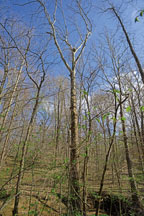
A large boulder in a tree’s top trunk fork in Yellowwood State Forest last spring.
Would you sit on the warlock seat?
Kristina Downs, managing editor for the Journal of Folklore Research in Indiana University’s Institute for Advanced Studies, would not.
When she heard about a legend at Morgan-Monroe State Forest’s Stepp Cemetery, Downs’ brain told her it was not true. The story says a woman dressed in black, who sits on a stump carved in the shape of a seat, mourns for a lost son or husband, and that anyone who sits on that seat will die within a year.
The original warlock seat burned in 1974. A new one has taken its place, but that didn’t make a difference to her.
“It’s not a legend that fits in my world view, it seems ridiculous to believe in, but the risks are a little too high to say, ‘OK, let’s see what happens,’” she said.
It’s that combination of a compelling story and the inability to conclusively disprove it that gives many tales like the warlock seat their staying power, Downs says. Belief is a spectrum, and everyone has a tipping point where they will believe.
Many people love hearing and creating stories like the warlock seat for the same reason they like going to scary movies. The rational explanation is boring or just doesn’t seem to justify the fantastic thing we see before us—there must be another reason, so we create it, she says. This is one reason why 70 to 75 percent of people believe in some sort of ghosts or spirits, according to studies Downs has seen.
Many DNR properties and surrounding areas are part of such stories. Whether or how much you choose to believe is up to you.
To read the rest of this article subscribe to Outdoor Indiana or pick up a copy at most Barnes and Noble bookstores, and state park inns. To subscribe, click here or call (317) 233-3046.
- Let's Talk Wild Turkey
Myth, truth and restoration
By Phil Bloom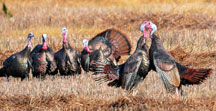
Male turkeys, called toms, are the center of attention during a spring squabble in Wabash County. Fighting during the early part of the breeding season can be a common sight.
An often-told story asserts that Benjamin Franklin implored the Continental Congress to choose the wild turkey as the national bird of the fledgling United States.
That’s not so, although Franklin did hold wild turkeys in higher regard than the bald eagle that eventually graced the National Seal.
The truth is revealed in the book “The Eagle and the Shield: A History of the Great Seal of the United States” by Richard Patterson and Richardson Dougall.
Fiction aside, nearly 240 years later, both the bald eagle and wild turkey are inextricably linked in another way. Abundant species when Europeans first landed in the New World, both faced extinction by 1900 before rebounding as a result of successful wildlife restoration efforts across the U.S., especially in Indiana.
To read the rest of this article subscribe to Outdoor Indiana or pick up a copy at most Barnes and Noble bookstores, and state park inns. To subscribe, click here or call (317) 233-3046.
- In Land We Trust
Benjamin Harrison Conservation Trust adds success stories
By Marty Benson, OI staff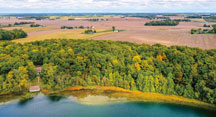
Nearly a mile of undeveloped shoreline is now protected at cold-water Crooked Lake.
Crooked Lake is one the state’s cleanest, deepest, and most ecologically valuable bodies of water.
Part of a chain of glacial lakes, it covers 206 surface acres, has a maximum depth of 108 feet, and an average depth of 43 feet. Perhaps most important, it’s cold. Year-round.
“It is one of just a handful of lakes in Indiana that support cold-water habitat throughout the summer,” said Jeremy Price, north region fisheries supervisor for the Division of Fish & Wildlife.
Cisco, Indiana’s only native inland salmonid, is just one example of a species that needs such water. In the late 1950s, cisco was present in 49 of Indiana’s natural lakes. Today, cisco populations are found in only seven. Crooked, in Whitley and Noble counties, is the second largest of those lakes. Lake Gage, which spans 327 acres in Steuben County, is the largest.
Crooked Lake is also a recreation destination. Public access sites are provided for boaters and paddlers, as well as for anglers who pursue the thriving populations of bluegill and yellow perch.Hikers are able to park and use 2.8 miles of trails to experience the old forests and abundant large-flowered trillium colonies.
On a broader scale, Crooked Lake sits atop the Tippecanoe River watershed, which is an important position from which to be able to influence the area’s water quality.
To read the rest of this article subscribe to Outdoor Indiana or pick up a copy at most Barnes and Noble bookstores, and state park inns. To subscribe, click here or call (317) 233-3046.
Reader Photos
Each issue, Outdoor Indiana staff will select reader submitted photos to feature in the magazine. If you would like the chance to be featured, please submit your photo, along with your name and phone number to:
Please, only submit original photography that you have taken. Do not send files over 9 MB in size. JPG format is preferred.
March/April 2021
About Outdoor Indiana
Outdoor Indiana, the state's premier magazine, delivers the wonders of the Hoosier outdoors to subscribers' homes and offices six times a year in 48 pages of vibrant color. For the best of state parks, lakes, wildlife, forests, trails, hunting, fishing, wildflowers and outdoorsy people, plus inside information from DNR experts, subscribe for $15 per year or $28 for two years. Follow the magazine staff on Facebook.
Subscribe to Outdoor Indiana magazine
Visit the Indiana State Parks online store to subscribe. Cost is $15 for a one year subscription (6 issues) or $28 for two years (12 issues).
Donate
Printing and distribution costs for Outdoor Indiana magazine have increased. One way we’re offsetting these costs is through the Friends of Outdoor Indiana Group administered through the Indiana Natural Resources Foundation. Donations to our friends group helps keep our subscription price low and ensures we’ll be around to bring you the best of Indiana’s outdoors for years to come. Donate at the INRF website and include “Friends of Outdoor Indiana” in the “In Honor Of/In Memory Of” line.
Outdoor Indiana
402 W. Washington St., W255-B
Indianapolis, IN 46204
317-233-3046
OIorders@dnr.IN.gov

